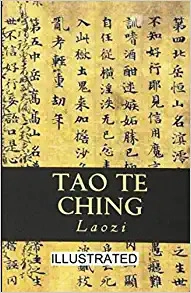Reading Level
What is the reading level of The Tao Te Ching: New Classics Series?
Analysing the books in the series, we estimate that the reading level of The Tao Te Ching: New Classics Series is 10th and 11th grade.
Expert Readability Tests for
The Tao Te Ching: New Classics Series
| Readability Test | Reading Level |
|---|---|
| Flesch Kincaid Scale | Grade 8 |
| SMOG Index | Grade 10 |
| Coleman Liau Index | Grade 7 |
| Dale Chall Readability Score | Grade 7 |
Reading Time
1 hrs 1 mins
How long to read The Tao Te Ching: New Classics Series?
The estimated word count of The Tao Te Ching: New Classics Series is 15,035 words.
A person reading at the average speed of 250 words/min, will finish the book in 1 hrs 1 mins. At a slower speed of 150 words/min, they will finish it in 1 hrs 41 mins. At a faster speed of 450 words/min, they will finish it in 0 hrs 34 mins.
| The Tao Te Ching: New Classics Series - 15,035 words | ||
|---|---|---|
| Reading Speed | Time to Read | |
| Slow | 150 words/min | 1 hrs 41 mins |
| Average | 250 words/min | 1 hrs 1 mins |
| Fast | 450 words/min | 0 hrs 34 mins |
- Authors
-
Laozi Laozi
More about The Tao Te Ching: New Classics Series
15,035 words
Word Count
for The Tao Te Ching: New Classics Series
87 pages
Pages
1 hour and 37 minutes
Audiobook length
Description
The Tao Te Ching (/ˌtaʊtiːˈtʃɪŋ/,[1] /ˈdaʊ dɛ ˈdʒɪŋ/;[2] simplified Chinese: 道德经; traditional Chinese: 道德經; pinyin: Dàodé Jīng [tâu tɤ̌ tɕíŋ] (About this soundlisten)),[a] also known as Lao Tzu or Laozi,[7] is a Chinese classic text traditionally credited to the 6th-century BC sage Laozi. The text's authorship, date of composition and date of compilation are debated.[8] The oldest excavated portion dates back to the late 4th century BC,[9] but modern scholarship dates other parts of the text as having been written—or at least compiled—later than the earliest portions of the Zhuangzi.[10]The Tao Te Ching, along with the Zhuangzi, is a fundamental text for both philosophical and religious Taoism. It is very similar to Hindu Upanishads in explaining the fundamental Unity Principle indicating that it shares common roots with the Upanishads and Vedas. It also strongly influenced other schools of Chinese philosophy and religion, including Legalism, Confucianism, and Buddhism, which was largely interpreted through the use of Taoist words and concepts when it was originally introduced to China. Many artists, including poets, painters, calligraphers, and gardeners, have used the Tao Te Ching as a source of inspiration. Its influence has spread widely outside East Asia and it is among the most translated works in world literature.[
